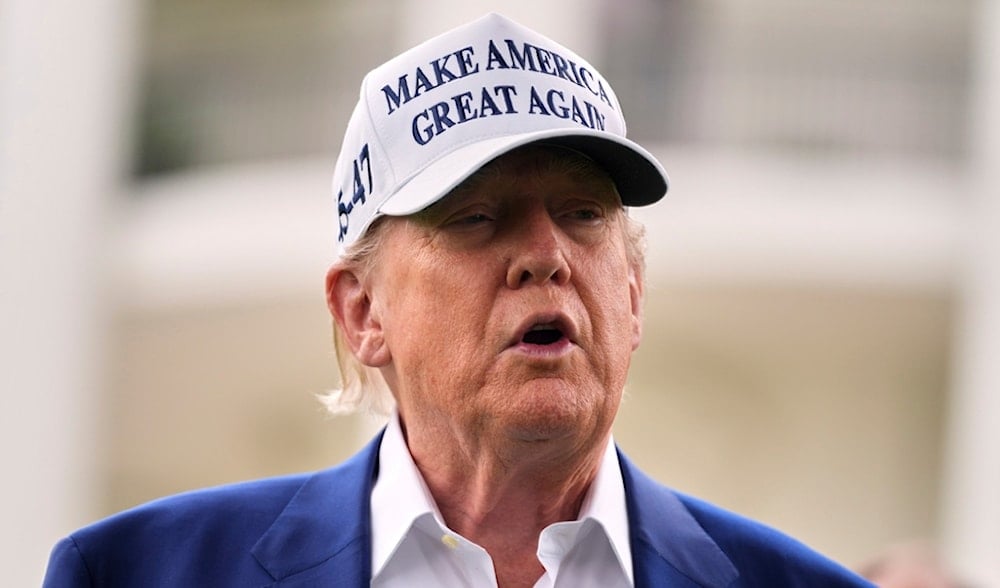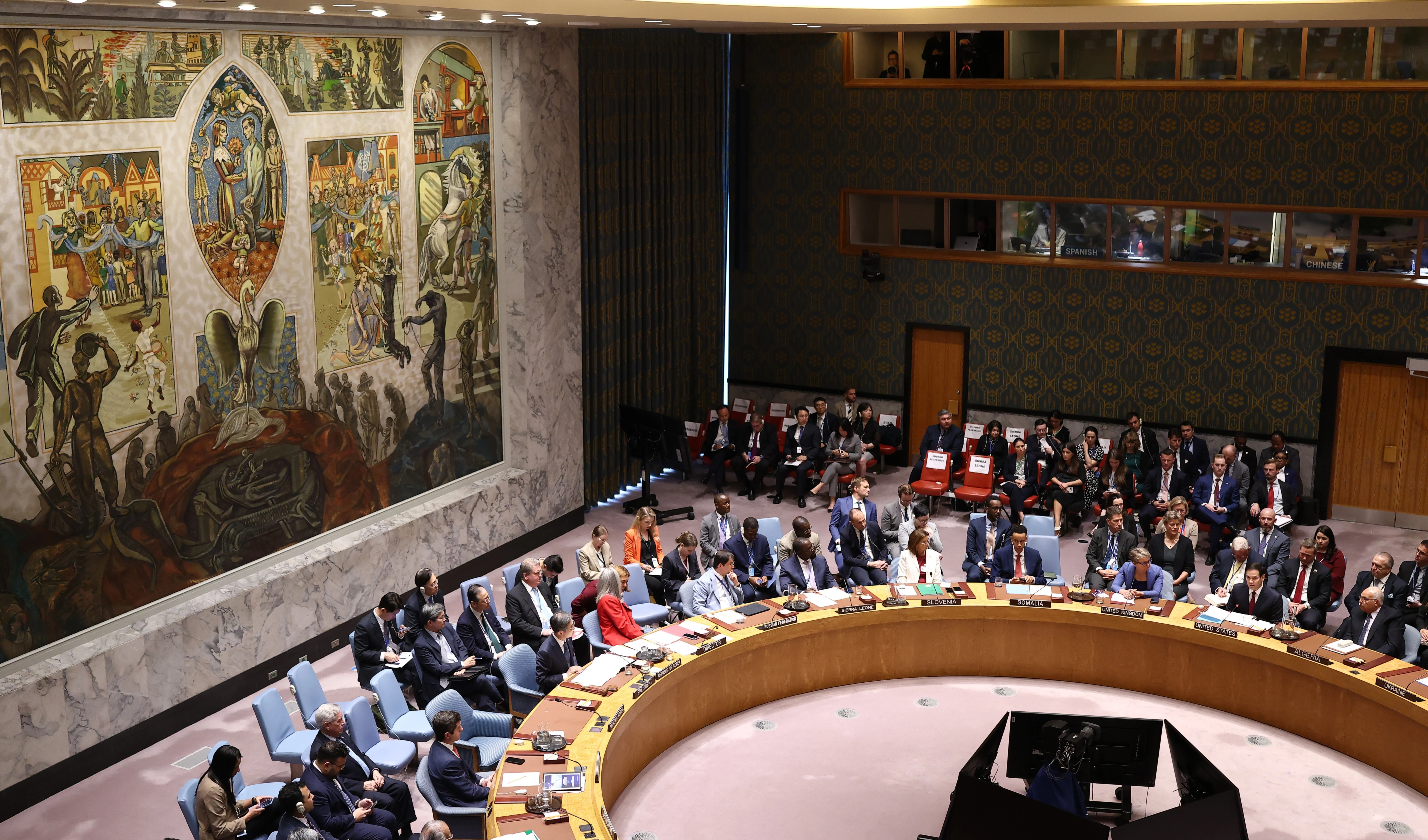From threats to timeout: What is Trump's Iran stance?
US President Trump stalls a final decision on Iran as internal MAGA opposition and European diplomacy gain ground.
-

President Donald Trump speaks as a flag pole is installed on the South Lawn of the White House, Wednesday, June 18, 2025, in Washington. (AP)
Four days after abruptly leaving the G7 summit in Canada and warning civilians to “evacuate Tehran,” US President Donald Trump on Friday signaled a delay in any military action against Iran. Speaking before a fundraiser at his New Jersey golf club, Trump said he was still undecided and waiting to see “whether or not people come to their senses.”
While raising the claim of Iran’s nuclear threat, Trump avoided detailing a potential US response. The Washington Post highlighted that the American President spent the remainder of the day focusing on a myriad of issues, anything but the Iranian question.
He shifted public focus toward domestic issues, including calls for a special prosecutor on the 2020 election and legislative efforts around his “One Big Beautiful Bill.”
Trump’s indecision has fueled intense internal lobbying from both hawks and anti-interventionists. Among the latter are key MAGA figures like Steve Bannon and Charlie Kirk, both of whom recently met with Trump at the White House and advised against military engagement, framing hawkish arguments as manipulative sales tactics.
Bannon openly criticized pro-“Israel” advocates and conservative media for pressuring Trump after having openly accused the Israeli government of attempting to drag the United States into a war with Iran, while Kirk warned of the unpredictable consequences of striking Iran.
Press Secretary Karoline Leavitt delivered a statement directly from Trump, indicating that he would allow a two-week window for negotiations. Trump confirmed the same on the tarmac in New Jersey, saying, “I’m giving them a period of time... and I would say two weeks would be the maximum.”
Though the statement had been drafted before Trump’s lunch with Bannon, the timing underlined the sway of MAGA voices within the administration.
Read more: Trump on potential of strikes on Iran: 'I may do it, I may not do it'
Trump skeptical of European de-escalation efforts
Meanwhile, Friday’s talks in Geneva between Iranian, European, and EU diplomats ended without a breakthrough, as Iran conditioned negotiations on an end to Israeli strikes. Despite this, a White House official told The Washington Post that Trump supported allied diplomatic efforts that could move Iran closer to accepting his terms.
Still, Trump remained skeptical, saying Europe “is not going to be able to help on this one” and insisting that “Iran doesn’t want to speak to Europe. They want to speak to us.”
Trump's statements, however, largely contradicted affirmations coming from Iran, which have reiterated Tehran's refusal to resume talks with the US for its complicity in the Israeli aggression.
Trump again contradicted his Director of National Intelligence, Tulsi Gabbard, who had assessed earlier this year that Iran is not pursuing a nuclear weapon. While insisting that Iran could not acquire nuclear weapons, playing the two-rope game and advocating for diplomacy, and threatening the entirety of Tehran to immediately evacuate, Trump's pro-intervention allies called for a US attack and regime change in Iran.
Republican senators like Lindsey Graham and Ted Cruz shared similar sentiments, calling for the removal of Iran's current regime. However, Trump’s hesitance signals an unresolved internal conflict between pressure for swift military intervention and his long-standing policy to avoid drawn-out wars.
#US Senator #TedCruz wants regime change in Iran, but can't name its population, gets basic facts wrong, and backtracks live on air. #TuckerCarlson presses him: “You don’t know the population of the country you seek to topple?”
— Al Mayadeen English (@MayadeenEnglish) June 18, 2025
Cruz then said, “We’re carrying out military… pic.twitter.com/OKITTKDtNc
With his special envoy Steve Witkoff continuing indirect contact with Iranian officials, the administration appears to be holding a fragile line between escalation and diplomacy.

 4 Min Read
4 Min Read









